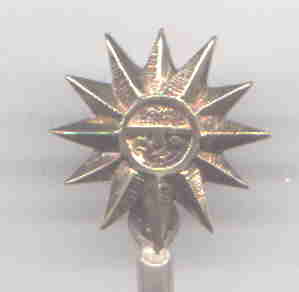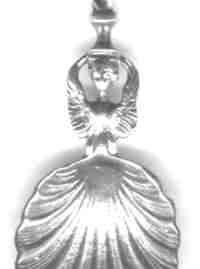I came across this very interesting looking silver piece so I bought it. Later I discovered that this untensil is called a "Claret spoon". In Osterberg's book "Sterling Silver Flatware for Dining Elegance", on page 152 he discusses these unusual spoons. He says that claret spoons were made from the 1880's through about 1910. The original use is unclear, but some people think that it was to pick up fruit from the bottom of tall cut-glass claret pitchers. Others say that the spoon was used to place fruit on individual dishes after it had been retrieved from deep china pitchers. He expresses doubt as to their functionality and as to why they were named after the red wine which is allowed to sit for extended periods. This was not one of the more popular types of flatware produced, so in today's market they are relatively rare.

I suspect that this claret spoon is from after 1900 as it is more the hand crafted "arts and crafts" style rather than the pattern pieces which are shown in the book. The finial is a golden starburst design which I was told that it was acid tested as low quality gold. The finial is "in the round" and the reverse has the same design.
The spoon as you can see is very long (11.5") and the handle is attached to the bowl with a rattail. The handle is round its entire length and tapers to a point under the bowl. It is marked sterling with a maker name of Delmas. I have been unable to find any definitive information on this maker in my books, but a web search found a silver trophy which had also been manufactured by a Leonard Delmas. I assume that it is the same person.

Arts and Crafts Claret Spoon

This very long (11.5") claret spoon is in the arts and crafts tradition. It has a polished red stone (I think it is jasper). It is marked sterling with a maker of V. Shraub. I have a hard time visualizing what this spoon could be used for as it is very thin and consequently not very strong. It is interesting, however.

This long (9.2") spoon features a sailing ship finial and an art nuevo lady base with a shell shaped bowl. It was made in Germany of 800 silver (vermeil bowl) by B & L and I suspect it was made in the late 1880's because the disk below the ship is serrated in the style that was popular at that time. The casting is also nicer and crisper than the usual pieces found in this style. I guess it could be used as either a claret spoon or a very long ice tea spoon.
